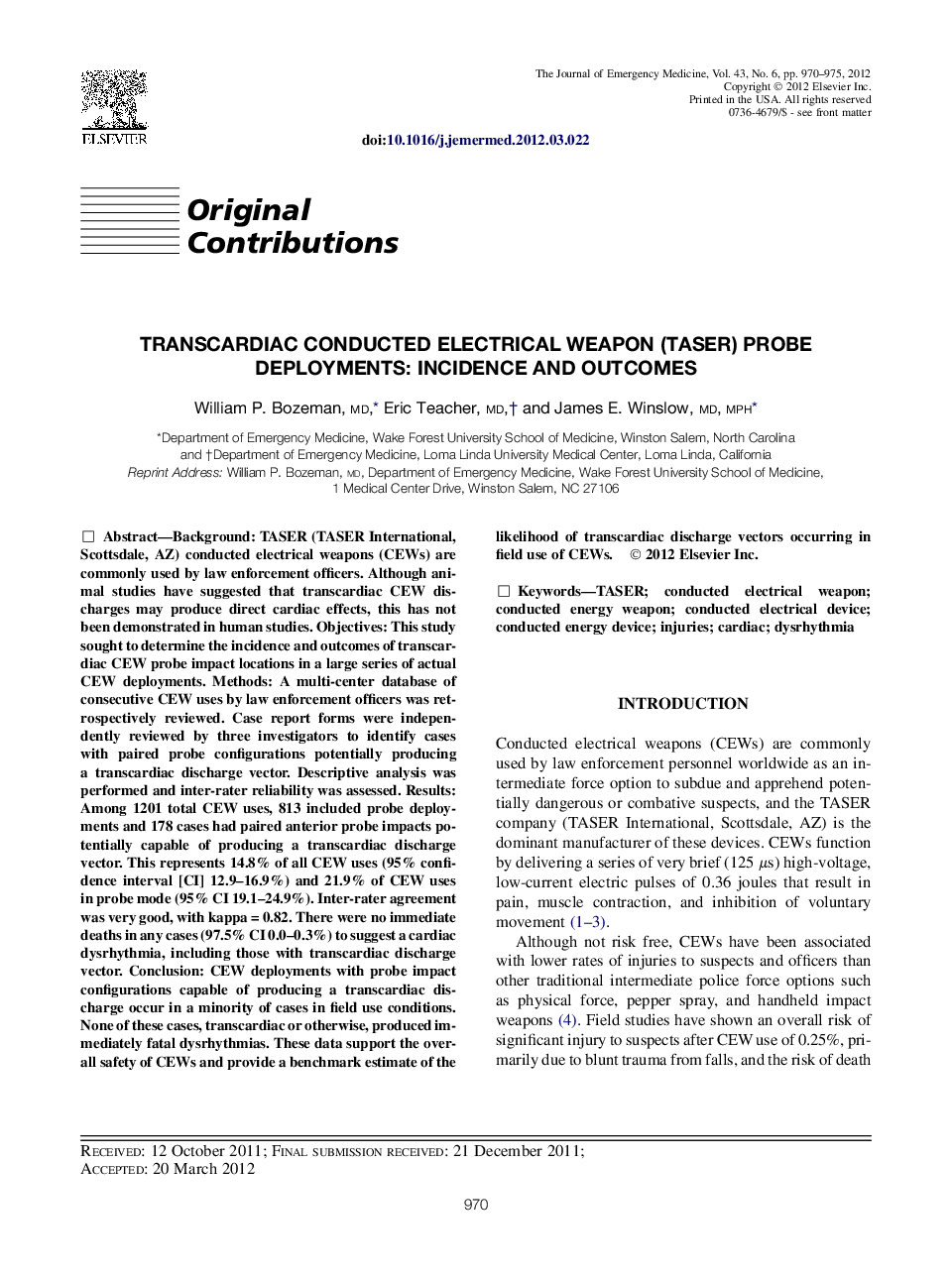| Article ID | Journal | Published Year | Pages | File Type |
|---|---|---|---|---|
| 3246773 | The Journal of Emergency Medicine | 2012 | 6 Pages |
BackgroundTASER (TASER International, Scottsdale, AZ) conducted electrical weapons (CEWs) are commonly used by law enforcement officers. Although animal studies have suggested that transcardiac CEW discharges may produce direct cardiac effects, this has not been demonstrated in human studies.ObjectivesThis study sought to determine the incidence and outcomes of transcardiac CEW probe impact locations in a large series of actual CEW deployments.MethodsA multi-center database of consecutive CEW uses by law enforcement officers was retrospectively reviewed. Case report forms were independently reviewed by three investigators to identify cases with paired probe configurations potentially producing a transcardiac discharge vector. Descriptive analysis was performed and inter-rater reliability was assessed.ResultsAmong 1201 total CEW uses, 813 included probe deployments and 178 cases had paired anterior probe impacts potentially capable of producing a transcardiac discharge vector. This represents 14.8% of all CEW uses (95% confidence interval [CI] 12.9–16.9%) and 21.9% of CEW uses in probe mode (95% CI 19.1–24.9%). Inter-rater agreement was very good, with kappa = 0.82. There were no immediate deaths in any cases (97.5% CI 0.0–0.3%) to suggest a cardiac dysrhythmia, including those with transcardiac discharge vector.ConclusionCEW deployments with probe impact configurations capable of producing a transcardiac discharge occur in a minority of cases in field use conditions. None of these cases, transcardiac or otherwise, produced immediately fatal dysrhythmias. These data support the overall safety of CEWs and provide a benchmark estimate of the likelihood of transcardiac discharge vectors occurring in field use of CEWs.
